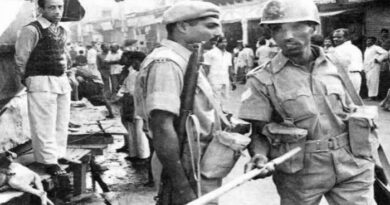Book Review: The Curse of Nalanda by Meenakshi Mohan
Every morning
I wake up with the news
Of blood shed
I feel my body,
Desperate to know whether
I am still alive!
Suman Pokhrel
Hatred in the name of religion is becoming the biggest problem for mankind in today’s times. Through “what was,” and “what is,” Manna Bahadur has skillfully blended fact with fiction, history with a modern way of life and thinking, and leaves her readers wondering how the world has become a “global village,” yet arcane prejudices have hardly changed. The Curse of Nalanda brings this to life by knitting a story around Devahuti, a child-widow from the Nalanda era, and Chandini, a modern-age journalist.
The Curse of Nalanda is a book of fiction with backdrops of history of the university, which at one time was an eminent center of learning, and was famous for its vast collection of books. It was ransacked brutally, and destroyed in fire by Muhammad bin Bakhtiyar Khilji, a Turkish invader in 1193. It is an interesting allegory that this intense fire, which lasted for six months yearning to be doused, parallels the fire in the minds and hearts of some, which has lasted generations.
Manna tells the story of two high-spirited young women, separated by nearly eight centuries, whose lives are intertwined through the same idea of terrorism. She says, “ The book deals with the issue of terrorism as it existed then, and as it exists now.” Now, when terrorism has spread through the globe like a cancer, I see this book as representing more than a mere suspense-mystery.
Chandini grew up in Patna, a city near Nalanda. First time when she visits the ruins of Nalanda, she experiences a queer sensation as if she has been there before. Her second visit there is as a press reporter to do a story on Nalanda when President Dr. A.P.J. Abdul Kalam suggests in a joint session of Behar Assembly that Nalanda University should be revived. She hears a blast while there, blacks out, and imagines as if “ . . .she was on fire . . .she was choking . . . there was death and destruction everywhere . . ..” This gruesome precognitions, as well as enigmatic physical signs of burn-like-wounds over most part of her body are as dilemmatic to her as well as to her parents, friends and doctors. Is she connected in someway with the bygone days of Nalanda University? As I was reading this book, the lines from The Gita kept flashing through my mind, “. . .whatever entity one leaves the body at the time of death, that and that alone one attains . . . .” (The Bhagwat Gita, Gita Press, Gorakhpur, India. Chapter 8, text 6).
Devahuti, daughter of the chief cook of Nalanda University is a child widow. The social norms for women especially widows are very harsh on those days; however, Devahuti defies these social norms, and becomes a trap of Bakhtiyar Khilji’s false love and sympathy. It is her dream to get education, and become, a part of the learning community of Nalanda University. Her excitement is unexplainable when Bakhtiyar Khilji offers to take her to visit the university library. Will she be able to fulfill her lifelong dreams?
Chandini is given a similar opportunity to break glass ceilings, and cover an important summit in England. Political dignitaries from different countries of the world are to attend the summit. Her cameraman Ehsaan Ali is to accompany her. The story takes a portentous turn when Chandini finds herself entangled in a web of unexpected events and encounters. Readers are left entranced to discover if Chandini and Devahuti are able to untangle the motives of their oppressors?
The book gradually uncoils the mystery behind the “Curse.” Through different characters, The Curse of Nalanda precipitates many abstruse, esoteric questions regarding rebirth, connectivity with past life, intuitive visions – the ability to see beyond what is visible. Uses of metaphysical, supernatural anecdotes punctuate the story, and give it a more mysterious and suspenseful bend. Do we see religion as a divider or binder of humanity?
Manna Bahadur is an acclaimed author and has been a known figure at Doordarshan TV in India. The curse of Nalanda is her second novel – a page-turner mystery, and an eye opener!
(This review by Meenakshi Mohan first appeared in the Confluence UK in August 2016)




